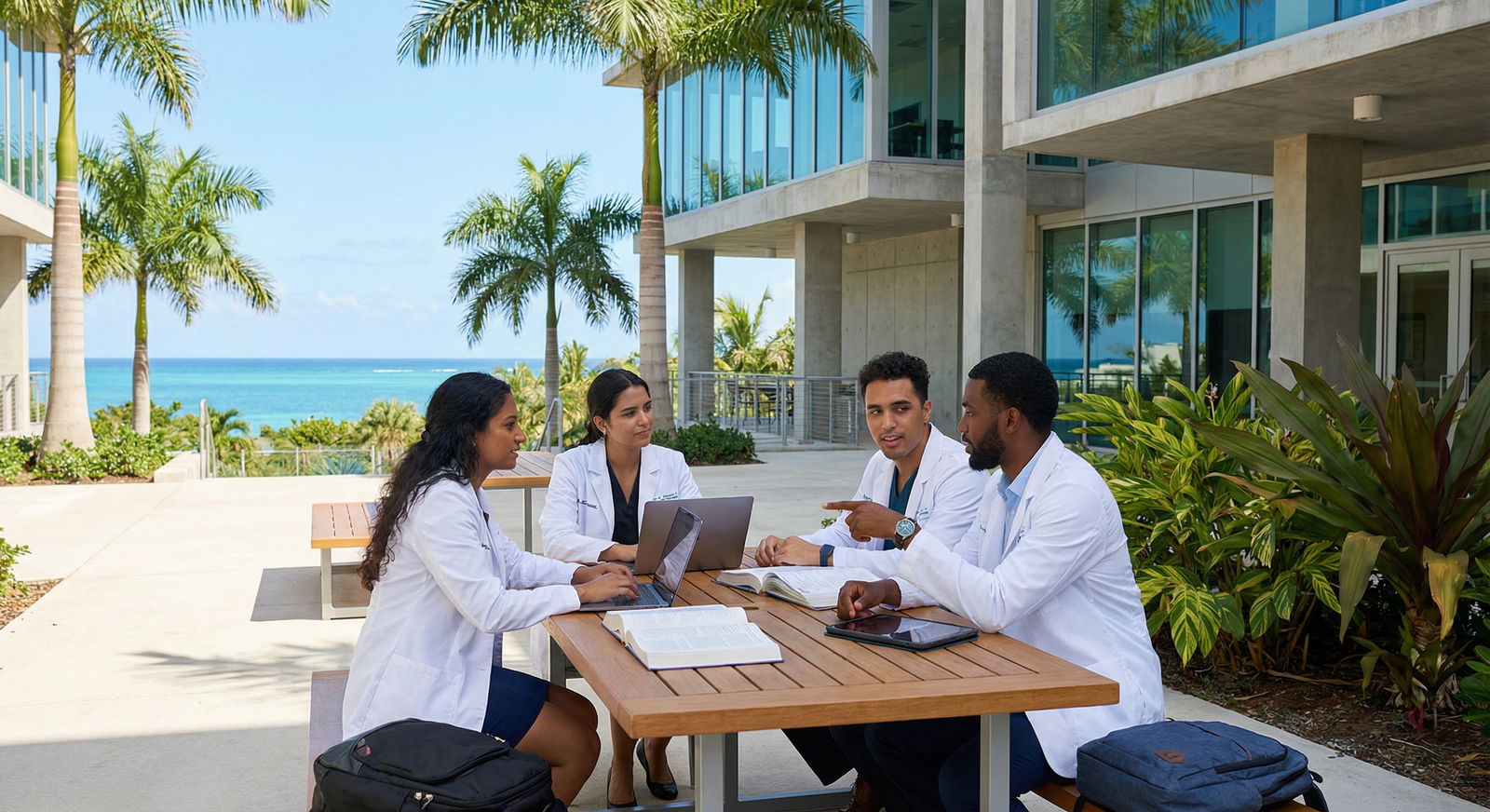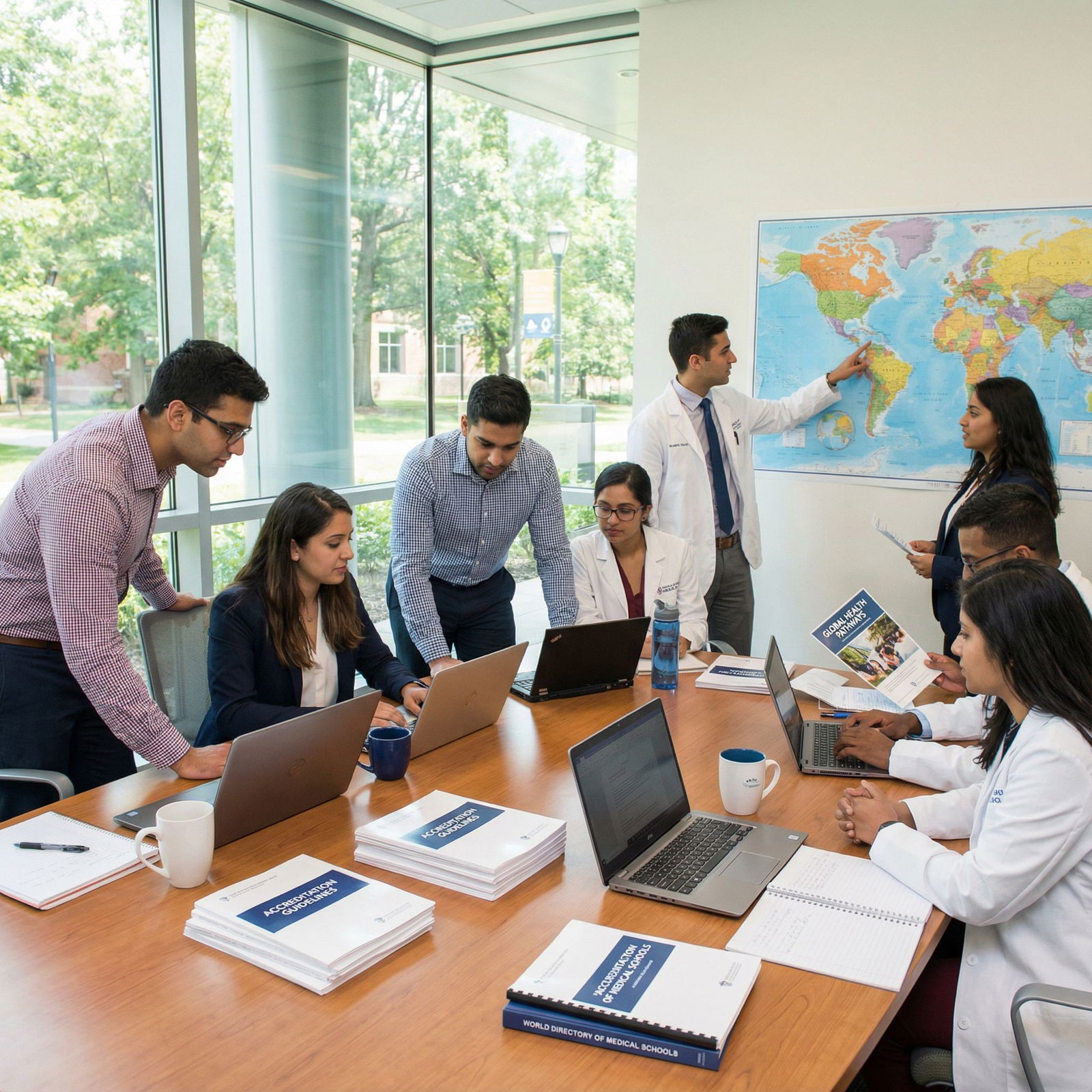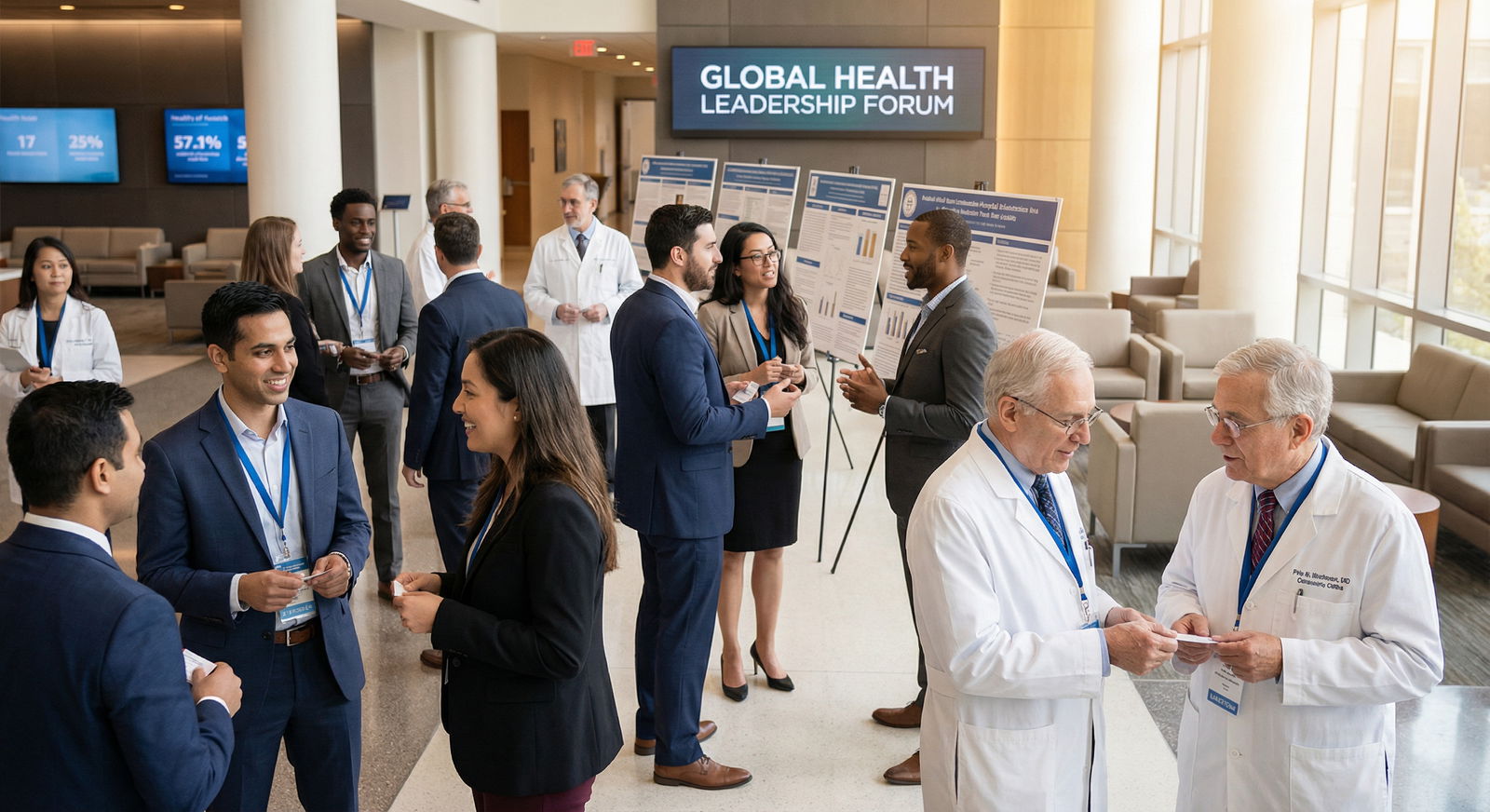Unlocking Medical Education in Europe: A Guide for International Graduates

Introduction: Why Europe Attracts International Medical Graduates
Medical education in Europe offers a compelling mix of academic excellence, robust healthcare systems, and rich Cultural Experiences. For International Medical Graduates (IMGs) and aspiring medical students, Europe can be both an exciting and complex destination. The region encompasses dozens of countries, each with its own language, licensing rules, and healthcare model—yet tied together by common European standards and cross-border Healthcare Opportunities.
Whether you are still in high school considering Studying in Europe for medical training, a medical student abroad thinking about clinical rotations, or an IMG planning to transition into European residency programs, understanding how the system works is essential. This guide provides a detailed, practical overview of Medical Education in Europe, with a special focus on opportunities and challenges for IMGs—and concrete strategies to help you succeed.
Understanding the Medical Education System in Europe
Europe is not a single unified system, but several shared frameworks shape how medicine is taught and practiced across the continent. Knowing the general structure will help you compare countries and plan your path more strategically.
The Bologna Process and Degree Structures
Most European countries follow the Bologna Process, an agreement that standardizes higher education structures across Europe. For medicine, this often means:
- A clearly defined degree structure
- Compatibility and comparability of qualifications
- Facilitation of mobility between European universities
However, medicine is a “regulated profession,” so it often follows integrated long programs rather than the standard bachelor–master split seen in other fields.
1. Undergraduate Medical Education (First Medical Degree)
In many European countries, “medical school” is entered directly after high school (or equivalent), rather than after a bachelor’s degree as in the US and Canada. Key features:
- Duration: Typically 5–6 years of continuous study
- Degree titles: Vary by country—commonly:
- MD (Doctor of Medicine)
- MBBS / MBChB (Bachelor of Medicine, Bachelor of Surgery)
- “Medicinae Universae Doctor” or national equivalents
- Curricular structure often includes:
- Preclinical years: basic sciences (anatomy, physiology, biochemistry), early clinical exposure
- Clinical years: rotations in internal medicine, surgery, pediatrics, OB/GYN, psychiatry, family medicine, and more
- Community placements: primary care settings, rural health, or public health modules
- Assessment methods:
- Written exams (MCQs, short-answer questions, essays)
- Practical exams (OSCEs—Objective Structured Clinical Examinations)
- Thesis or research project in some programs
For IMGs and non-EU applicants, many universities offer 6-year entry programs directly after high school, alongside some graduate-entry 4-year programs (common in Ireland, UK, and a few central/eastern European schools).
2. Postgraduate Training: Residency and Specialist Education
After obtaining a primary medical degree, graduates must complete postgraduate training before independent practice:
- Internship or Foundation Years:
- Some countries (e.g., UK, Ireland) use structured foundation programs (e.g., FY1–FY2)
- Others integrate internship with early specialist training
- Specialist training (Residency):
- Typically 3–6+ years, depending on specialty and country
- Usually includes:
- Structured rotations
- In-service exams or board exams
- Research or quality improvement projects
- Supervision model:
- Strong emphasis on supervised practice, progressive responsibility, and competency-based milestones
For IMGs seeking residency in Europe, entry usually requires:
- Degree recognition or equivalence
- Language proficiency
- Passing national exams (varies by country)
- Competitive application processes similar to national graduates
3. Continuing Medical Education (CME) and Revalidation
Most European countries mandate ongoing education to maintain licensure:
- CME credits via conferences, workshops, and online courses
- Periodic re-certification or appraisal (e.g., UK’s revalidation system)
- Emphasis on evidence-based practice, patient safety, and clinical governance
Key Medical Education Hubs in Europe
While there are strong medical schools across the continent, several hubs are particularly popular with IMGs due to language options, international programs, and global recognition.
United Kingdom (UK)
- Notable schools: Oxford, Cambridge, UCL, Imperial, King’s College London
- Strengths: research intensity, structured foundation and specialty training, strong global brand
- Language: English
Ireland
- Universities in Dublin, Cork, Galway, and Limerick attract many North American and Asian students
- Often have North American–style 4-year graduate-entry programs
Germany
- Charité – Universitätsmedizin Berlin, LMU Munich, Heidelberg, etc.
- Strong emphasis on scientific training and clinical rigor
- Instruction largely in German, though some preclinical or parallel English courses may exist
Netherlands
- University of Amsterdam, Leiden, Groningen, Maastricht
- High-quality education and strong focus on problem-based learning and research
- Many master’s and research programs in English; core MD programs increasingly competitive for non-Dutch speakers
Spain and Italy
- University of Barcelona, University of Milan, Sapienza University of Rome, and others
- Growing number of English-taught MBBS programs designed for international applicants
Central and Eastern Europe (e.g., Poland, Czech Republic, Hungary, Romania, Bulgaria)
- Many universities offer 6-year English-language programs targeted at IMGs
- Often more accessible entry requirements but still rigorous training
- Popular among students from the Middle East, India, Africa, and North America

Major Opportunities for IMGs in European Medical Education
1. High-Quality Education and Global Credibility
European medical schools are renowned for:
- Robust academic foundations in biomedical sciences
- Early and continuous clinical exposure
- Integration of evidence-based medicine and critical thinking
- Strong alignment with international standards (e.g., WFME, ECFMG-recognized schools)
For IMGs, degrees from well-recognized European institutions can:
- Strengthen residency applications in Europe, the Middle East, and parts of Asia
- Support exam eligibility (e.g., USMLE, PLAB, AMC) when combined with appropriate accreditation
- Enhance long-term career mobility in academic and clinical roles
Actionable tip: Before committing, verify your prospective school’s status on:
- World Directory of Medical Schools (WDMS)
- ECFMG and relevant national medical councils
2. Studying in English While Immersed in a New Culture
Many European universities now offer English-taught medical programs, especially in:
- Central and Eastern Europe (Poland, Hungary, Czech Republic, Romania, Bulgaria)
- Spain, Italy, and some programs in Germany and the Netherlands
- Ireland and some UK programs (though UK admissions are highly competitive and often favor UK/EU residents)
Benefits for IMGs:
- Can start medical education without already mastering a European language
- Access European-style clinical training while gradually learning the local language for patient care
- Study with a cohort of international peers, building a global network
However, remember that clinical years almost always require functional proficiency in the local language to interact safely with patients.
3. Exposure to Diverse Patient Populations and Healthcare Models
Studying in Europe offers rich clinical and Cultural Experiences:
- Treat patients from a wide range of ethnicities, socioeconomic backgrounds, and cultural traditions
- Learn how universal health coverage or mixed public-private systems work in practice
- See contrasting patterns of disease and healthcare utilization versus your home country
This exposure improves:
- Cultural competence and communication skills
- Adaptability to different healthcare systems—valuable if you plan to work internationally
- Awareness of social determinants of health and public health strategies
4. Research and Academic Career Opportunities
Europe hosts many of the world’s leading biomedical research centers and collaborative networks:
- Access to cutting-edge research in oncology, cardiology, neurology, public health, and more
- Opportunities to join funded projects, clinical trials, or PhD programs
- Strong connections with EU-wide research initiatives (e.g., Horizon Europe)
For IMGs, engaging in research can:
- Strengthen residency and fellowship applications (both in Europe and abroad)
- Open doors to academic medicine, global health, or industry roles
- Build a publication record and professional profile early in your career
Practical advice:
Start early—ask professors about student research projects, apply for summer research fellowships, and attend departmental seminars to find mentors.
5. Travel, Lifestyle, and Personal Growth
Europe’s geographic and cultural diversity means your Medical Education can double as a life-changing personal journey:
- Weekend trips across the Schengen Area with minimal border formalities
- Access to major cultural capitals (Paris, Berlin, Rome, Barcelona, Vienna, etc.)
- Exposure to different cuisines, traditions, and languages
While lifestyle should not be your sole reason to choose a program, it can significantly enrich your personal development and resilience during the demanding years of training.
Key Challenges for IMGs Studying Medicine in Europe
Alongside these opportunities, IMGs face real obstacles that must be addressed proactively.
1. Competitive Admissions, Entrance Exams, and Language Requirements
Admissions Competitiveness
- Many European schools have limited seats for non-EU students
- Selection can be based on:
- High school grades or previous university performance
- Entrance tests (biology, chemistry, physics, aptitude)
- Interviews or multiple mini interviews (MMIs)
- Language tests (local language and/or English)
Entrance and Language Exams
Common requirements may include:
- English proficiency: IELTS, TOEFL, or Cambridge exams
- Local language: e.g., German (TestDaF, DSH), Spanish, Italian, or French depending on the program
- Specialized university-specific entrance exams in science subjects
Even in English-taught programs, clinical communication with patients will usually require at least B2–C1 proficiency in the local language by the time you start clinical rotations.
2. Recognition of Qualifications and Licensing Complexity
Every European country has its own rules governing:
- Recognition of foreign medical degrees
- Licensing exams (if any)
- Requirements for internships or supervised practice
- Residency (specialist training) entry
For IMGs this means:
- A degree from University A in Country X does not automatically guarantee the same pathway to practice in Country Y
- Postgraduate mobility within Europe is easier for EU/EEA citizens than for non-EU IMGs
- If you plan to return to your home country or move to a third country (e.g., US, Canada, Gulf states), you must ensure that your European degree is fully recognized there
Essential step:
Before enrolling, clarify:
- Will this degree satisfy your home country’s medical council requirements?
- What extra exams or internships will you need for your target country?
3. Cultural, Educational, and Clinical Practice Differences
Adjusting to a new country involves:
- Different teaching styles (e.g., problem-based learning, self-directed learning)
- Variations in hierarchy and team dynamics within hospitals
- New communication norms with patients and colleagues
- Different attitudes towards autonomy, consent, and family involvement
These differences can cause stress initially, but with time and support, they often become strengths that broaden your clinical and interpersonal skills.
4. Financial Considerations and Cost of Living
Costs vary widely across Europe:
- Tuition fees:
- Some countries (e.g., Germany, some Nordic nations) have very low or no tuition for EU/EEA students but may charge more for non-EU students
- English-taught programs targeting IMGs (e.g., in Poland, Hungary, Romania, Italy) typically range from moderate to high tuition
- Living expenses:
- High-cost cities: London, Dublin, Amsterdam, Zurich, Copenhagen, Scandinavian capitals
- Moderate or lower cost: many central and eastern European cities, smaller regional towns
Additional hidden costs:
- Health insurance (mandatory in many countries)
- Visa and residence permits
- Licensing exams, language courses, and materials
- Possible travel costs if you plan to return home periodically
Actionable advice:
- Create a multi-year budget estimating tuition, housing, food, transport, and exam costs
- Explore scholarships, government grants, and part-time work options (checking legal and visa restrictions carefully)
5. Immigration, Visa Rules, and Work Regulations
For non-EU IMGs, immigration rules significantly shape your experience:
- Student visas often limit working hours during term time
- Transition from student status to resident physician may involve complex paperwork and deadlines
- Post-study work visas vary widely between countries and can change with political shifts
You must understand:
- How long you can stay after graduation to find a job or residency position
- Whether you can switch from a student visa to a work visa from within the country
- Any restrictions on specialty training or public-sector employment for non-EU citizens
Staying informed through official government websites and your university’s international office is crucial.
Strategies for Success as an IMG in Europe
Despite the challenges, IMGs can thrive in European Medical Education with the right preparation and support.
1. Strategic Research and Long-Term Planning
Before applying:
- Identify your primary long-term goal:
- Practice in the same European country?
- Return to your home country?
- Move to a third country (e.g., US, Canada, Gulf, UK)?
- Shortlist countries and universities based on:
- Language of instruction and clinical practice
- Tuition and living costs
- Residency and licensing prospects for IMGs
- Accreditation and recognition in your target countries
Use:
- Official university websites and admissions offices
- Government health and immigration portals
- Student and alumni associations
- Reputable forums and IMG support groups (cross-check information for accuracy)
2. Build Strong Language and Communication Skills
Even if your program is in English, invest early in language learning:
- Start before you arrive using online platforms or local classes
- Continue with intensive courses once in-country
- Practice in everyday settings: supermarkets, public services, student groups
- Seek out clinical language courses focused on:
- Taking histories
- Explaining diagnoses and treatments
- Discussing sensitive topics and consent
Fluency in the local language improves:
- Patient safety and trust
- Your competitiveness for internship and residency positions
- Integration into the medical team and local community
3. Connect with Fellow IMGs and Local Students
Building a supportive network is critical:
- Join university international student societies and IMG groups
- Participate in student medical associations and specialty-interest groups
- Attend orientation and social events to meet local and international peers
Benefits include:
- Shared notes, exam tips, and resources
- Emotional support and mentoring
- Practical advice on housing, banking, and navigating bureaucracy
4. Seek Effective Mentorship and Career Guidance
Identify mentors who understand the path you’re aiming for:
- Faculty advisors involved in international programs
- Senior students or residents from your home region
- Alumni who have successfully matched into your target residency system (Europe, North America, etc.)
Ask for guidance on:
- Course and elective selection
- Research and extracurricular activities that strengthen applications
- Timing and preparation for licensing exams (e.g., USMLE, PLAB, national exams)
5. Stay Informed and Adaptable
Regulations in Medical Education, licensing, and immigration can change:
- Subscribe to updates from:
- National medical councils and licensing authorities
- Immigration offices and official government websites
- Your university’s international office and dean’s office
- Reassess your plan periodically:
- Are your target countries still feasible?
- Do you need to add a backup pathway (e.g., exams for another region)?
Flexibility and proactive planning significantly improve your long-term outcomes.

FAQs: Medical Education in Europe for International Medical Graduates
1. Can international medical graduates practice in Europe after their studies?
Yes, IMGs can practice in Europe, but the process is country-specific and often multi-step. Common requirements include:
- Recognition of your medical degree by the national medical council
- Proof of language proficiency at a clinically appropriate level
- Completion of internship or foundation training (if required)
- Passing national licensing or knowledge exams (in some countries)
- Securing a work visa or residence permit (for non-EU/EEA citizens)
Always check the requirements in the specific country where you intend to practice, as rules differ significantly between, for example, Germany, Spain, and the UK.
2. Are tuition fees for medical schools in Europe affordable for international students?
Tuition ranges from very low to high:
- Low or no tuition (mostly for EU/EEA students): some Nordic countries, Germany, parts of central Europe
- Moderate to high tuition: English-taught programs targeting IMGs, especially in Central/Eastern Europe, Italy, and Spain
- High tuition: Some private universities and certain Western European programs
In addition to tuition, consider:
- Cost of living (housing, food, transportation)
- Health insurance
- Exam and visa fees
Always review each university’s official fee schedule and plan a multi-year financial strategy, including contingency funds.
3. Do I need to be fluent in the local language to study medicine in Europe?
For English-taught programs, you may not need local language fluency to start the preclinical years, but:
- You will almost certainly need functional fluency for clinical years, as patient care is in the local language
- Universities often require or strongly encourage local language courses during the early years
- Licensing and residency applications typically require proof of local language proficiency at B2–C1 level
For local-language programs, strong language skills are essential from the outset. Even if you study in English, investing in language learning significantly improves your educational and professional opportunities.
4. What is the average duration of medical education and training in Europe?
Typical timelines are:
- Undergraduate medical program: 5–6 years (integrated)
- Internship or foundation training: 1–2 years (depending on country)
- Residency/specialist training: 3–6+ years (depending on specialty and country)
Overall, reaching independent specialist practice can take 8–14 years from the start of medical school, similar to other regions worldwide.
5. How can I maximize research and career opportunities while studying medicine in Europe?
To enhance your research profile and career prospects:
- Start early: approach faculty about student research projects or lab work
- Seek summer research internships or Erasmus+ exchanges (where available)
- Present at local or international conferences and aim for publications
- Join student chapters of professional societies (e.g., cardiology, surgery, public health)
- Align your research and electives with your intended specialty and country of practice
This combination of clinical excellence, research experience, and international exposure will strengthen your applications for residencies, fellowships, and future roles worldwide.
Europe offers IMGs a powerful blend of high-quality Medical Education, diverse Healthcare Opportunities, and transformative Cultural Experiences. With careful planning, realistic expectations, and proactive engagement in language learning, mentorship, and research, you can navigate the complexities of Studying in Europe and build a rewarding, globally relevant medical career.

SmartPick - Residency Selection Made Smarter
Take the guesswork out of residency applications with data-driven precision.
Finding the right residency programs is challenging, but SmartPick makes it effortless. Our AI-driven algorithm analyzes your profile, scores, and preferences to curate the best programs for you. No more wasted applications—get a personalized, optimized list that maximizes your chances of matching. Make every choice count with SmartPick!
* 100% free to try. No credit card or account creation required.














